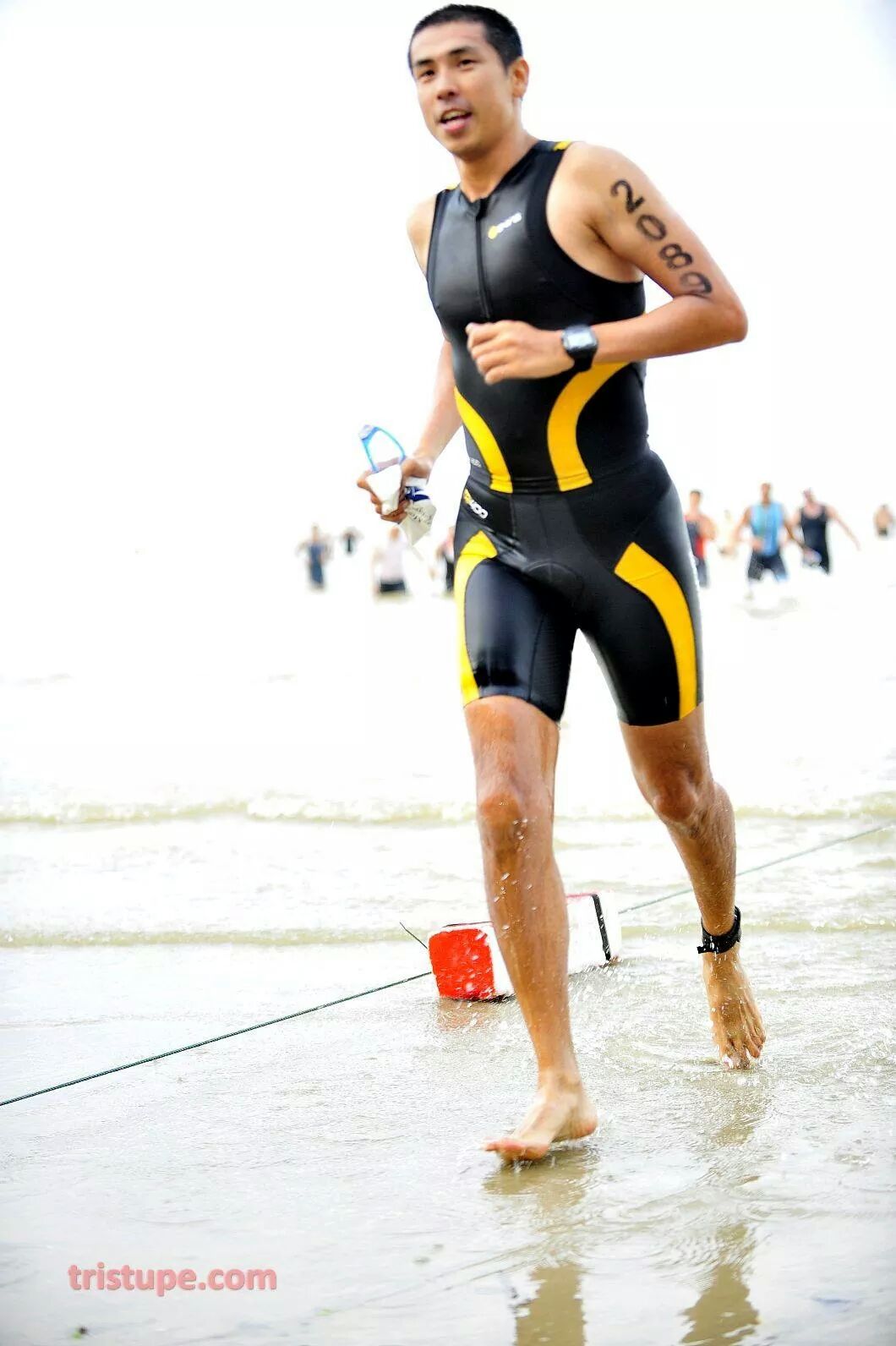Of the 3 disciplines in triathlon, swimming is normally the
most dreaded activity. Swimming is probably the reason why many
triathlete-wannabes did not make it into triathlon. It should not be, as
swimming should actually be zen like and relaxing. There could be various
reasons why swimming is difficult for a lot of people and based on my journey
thus far from a runner to a triathlete, I will try to share my observation and
how to overcome the obstacles and hopefully, giving you enough to make you into
a triathlete you wanted badly.
 |
| Group training in pool to simulate Triathlon crowds, courtesy of Total Immersion Malaysia |
 |
| Open water swim session by Swimon in PD, pic by Swimon |
For you guys that is serious in improving your techniques,
browse the Internet, there are plenty of tips to make you a more efficient
swimmer.
If you do not know how to swim at all, I actually deem that
better, as you do not have any bad habits that you have ingrained in your mind
for years. You can actually start fresh and learn to swim correctly. All you
need to do is, get a good swimming coach (no not those that teach you how to
swim leisurely, which actually could be teaching you wrong swimming habits, get
those triathlete coach).
 |
| Existing Putrajaya lake during Half IronMan Putrajaya, pic by Julia Othman |
This is where the third part and probably the biggest
challenge for new swimmer is, we only get to train in swimming pool while races
mostly are in open seas or lakes. Open water swim (OWS) is obviously different.
There is no four walls you can lean on, you cannot see the floor, there is no
lines on the floor to guide you, there is current and waves, there are living
beings that will scare the shit out of you.
From my view, it is all about your own confidence and
phobia, get over it and you be fine. If you cannot yet, do not fret, slowly
work on it. Firstly, get into the sea and try out one thing at a time. Lately
because of the boom of triathlon in the country, there is now OWS sessions
being conducted in Port Dickson almost every month, you should join if you
intend to experience and improve your open water experience. Life jacket,
kayak, first aider services are available that ensure safer environment to give
you confidence in OWS.
 |
| Glad to run out from the sea in my first triathlon in Morib, pic by Tristupe |
The last part of swimming is the stress of swimming closely
with many people during race day. In a mass start race, you will see over hundreds of people cramp on the beach side
and rushing into the water. It is like a stampede and this is another part why
swimming is not so much a welcome discipline for many in triathlon. My advice
on this, start from the back where you are more comfortable. Feel your way,
learn from others and as you gain more experience, you will know how to handle
these physical wars.
As for me, after almost a year of jumping into triathlon, I
can safely said that my swim has improved tremendously (though I am still slow
compare to those regular swimmers). The improved efficiency gave me the
confidence in races, at least I do not need to worry about meeting swim cutoff
but focus on getting through it without wasting too much energy. Through OWS
session and also race participants, I have gained more experience and
confidence to continue to improve on my swim leg.
Swimming itself can be very therapeutic and is a good
recovery activity after a heavy workout - run or cycle. Swimming also provides
a full body workout that helps in your life. If you can, make swimming part of
your life, just like any other workouts you are doing.
Having said that, if you are into triathlon, do remember
swimming is actually the shortest of the three disciplines, so train well and
train smart. I hope this article give an insight on how a runner, a
non-swimmer, overcame the challenges to start the journey into triathlon. We
all can do it!

No comments:
Post a Comment